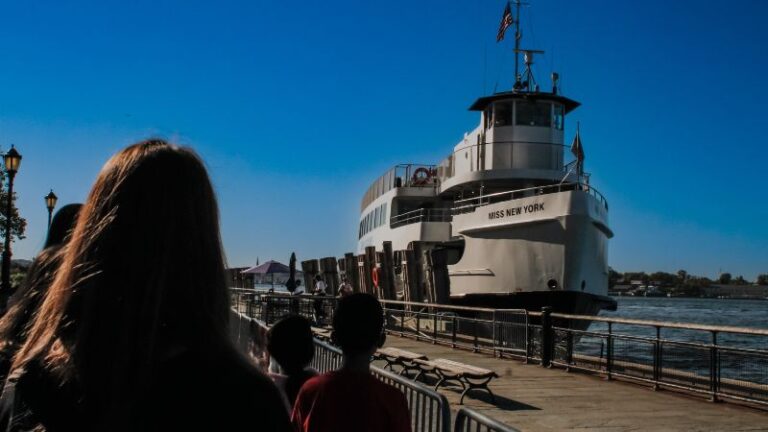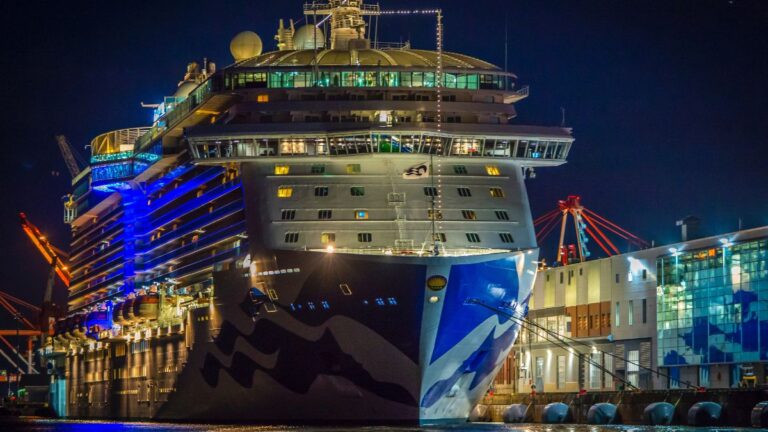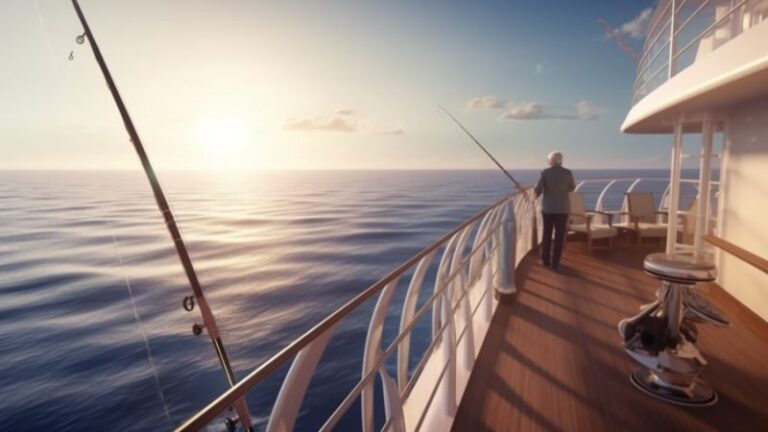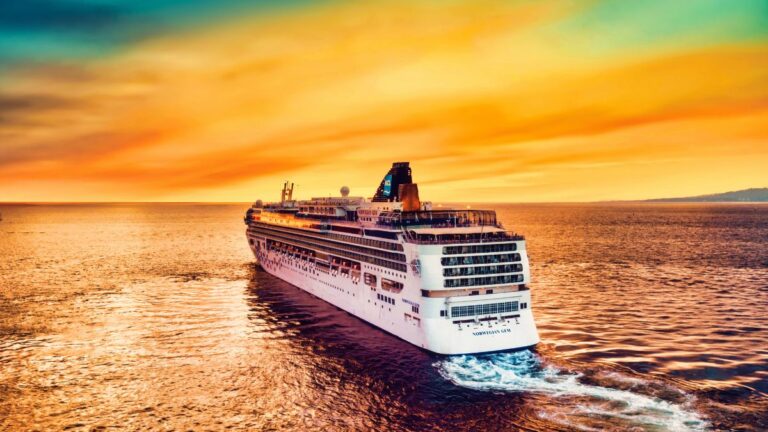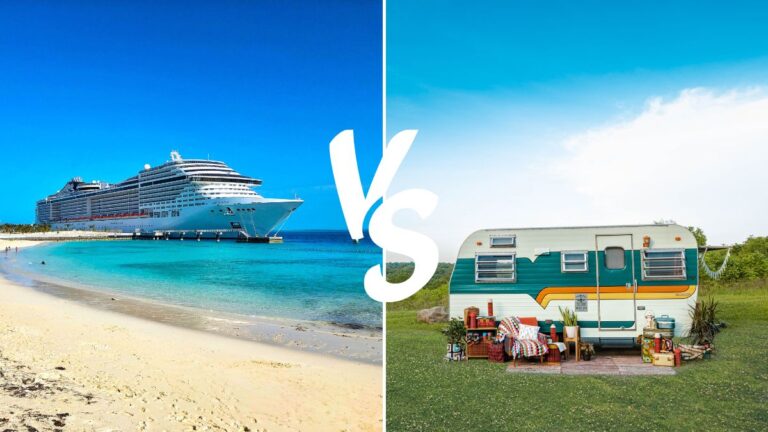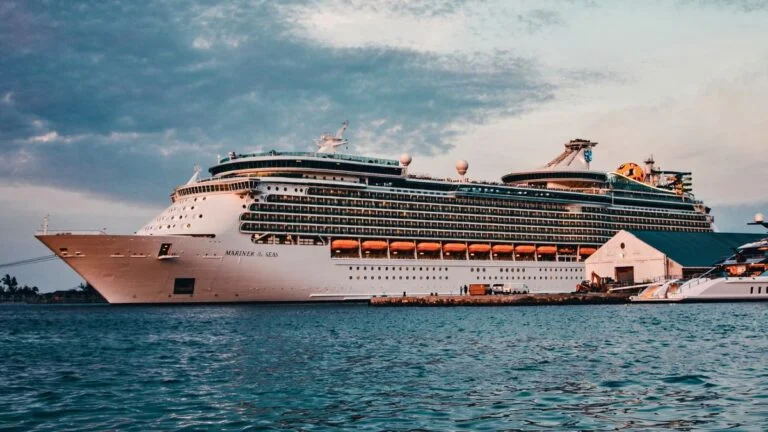Front or Back of a Cruise Ship? Which is Better For You?
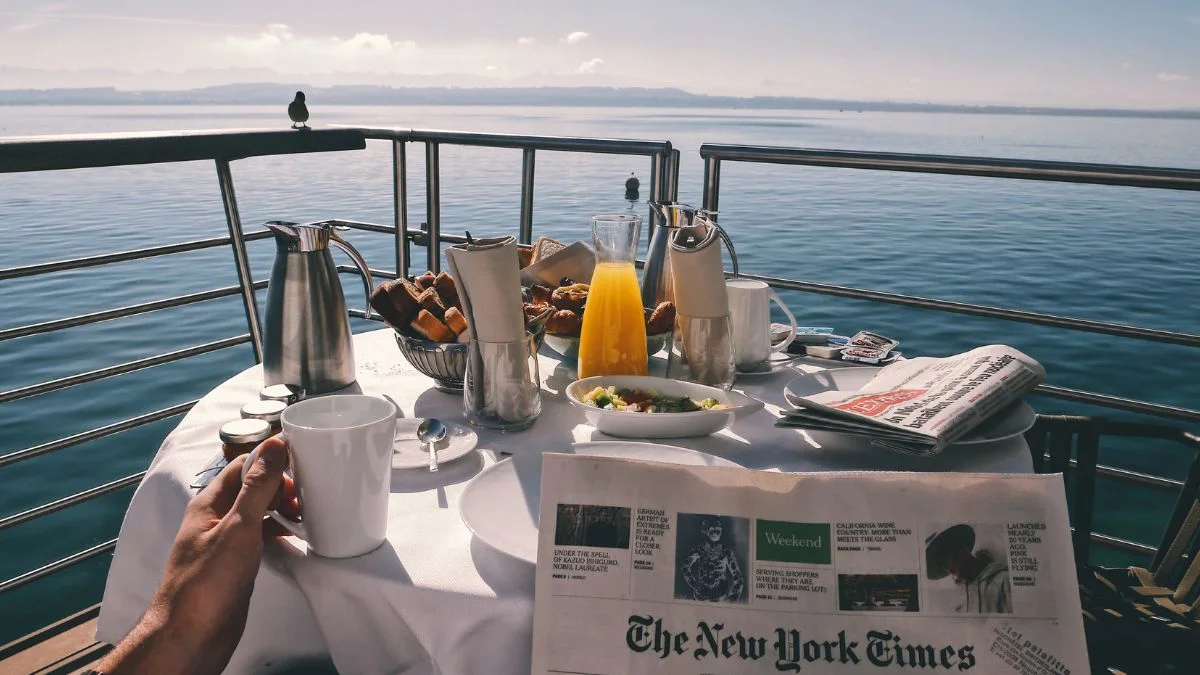
As participants in Amazon Associates and other programs, we earn from qualifying purchases. This comes at no additional cost to you. For more details, see our Affiliate Disclosure.
As you plan your next vacation, consider the unique experience a cruise ship can provide. The vast ocean before you, the whisper of the sea breeze, and the endless horizon will undoubtedly be a memorable adventure. However, choosing the right cabin can significantly impact your overall experience. A question many first-time and even experienced cruisers often ponder is whether it’s better to book a cabin at the front or the back of a cruise ship.
Each has its unique features and potential drawbacks, making the decision not as straightforward as it may seem. This article aims to guide you through these options, enabling you to make the best choice for your cruise holiday.
Understanding Ship Layout: The Basics of Front (Bow) and Back (Stern)
Before diving into the specifics of front (bow) and back (stern) cabin experiences, it’s crucial to have a basic understanding of a cruise ship’s layout. Simply put, a ship is divided into three main sections: bow (front), midship (middle), and stern (back).
The bow of the ship is the forward part and is typically where you’ll find the captain’s bridge, along with a range of cabins, entertainment venues, and possibly some dining options. The front of the ship often offers stunning views, especially from higher decks, but it’s also the part of the ship that first encounters waves, which could be a consideration for those susceptible to motion sickness.
The stern or back of the ship is where the engine is usually located. This area also houses a range of cabins, restaurants, possibly a pool area, and offers great views of the ship’s wake. Some cruisers prefer the back of the ship because it can be quieter in terms of passenger traffic, but it might also experience more engine noise and vibration.
In between the bow and stern, we have the midship. The midship is generally considered the most stable area of the ship, reducing motion sickness, and it provides the most centralized access to all amenities, but this article primarily focuses on the front and back cabins.
Understanding these basics will help inform your decision when choosing your cabin’s location and determining which end of the ship aligns with your cruising preferences.
The Front Cabin Experience: Pros and Cons
The front cabins, situated at the bow of the cruise ship, come with their unique attributes and can offer an experience quite different from that at the stern. Let’s dive into the various pros and cons to help you determine if a front cabin aligns with your cruising needs.
Pros:
- Spectacular Views: Front cabins often come with unobstructed, panoramic views, especially if you opt for a balcony cabin. Seeing the ship slice through the water and the ocean stretch out ahead of you can be quite a thrilling experience.
- Less Traffic: Generally, the front of the ship is less crowded than the midship and stern areas. This results in quieter corridors and potentially less foot traffic noise outside your cabin.
- Exclusive Facilities: On some cruise ships, specific amenities or entertainment venues are located towards the front, providing you easy access.
Cons:
- Motion Sensitivity: The bow of the ship experiences the most movement as it’s the first part of the ship to cut through the ocean waves. For those prone to motion sickness, this can be a significant drawback.
- Distance from Amenities: Depending on the ship’s layout, the front cabins might be farther from the main dining rooms, pools, or entertainment areas located midship or at the stern, which could mean more walking.
- Wind Exposure: When the ship is in motion, the front cabins, particularly those with balconies, can be quite windy. This might limit the time you can comfortably spend on your balcony.
Knowing these pros and cons should help inform your decision when booking a front cabin on your next cruise ship vacation.
The Back Cabin Experience: Pros and Cons
The back cabins, positioned at the stern of the ship, offer a unique perspective to cruise-goers. Much like the front cabins, they have their own set of advantages and disadvantages, which we’ll explore below:
Pros:
- Stunning Wake Views: One of the biggest perks of choosing a back cabin is the mesmerizing view of the ship’s wake trailing off into the distance. This can be particularly stunning during sunrise and sunset.
- Reduced Traffic: Similar to the front cabins, back cabins tend to see less foot traffic than those situated midship, providing a quieter, more serene environment.
- Unique Cabin Layouts: Owing to the ship’s structure, stern cabins can often have unique, spacious layouts, offering larger balconies and distinctive room shapes.
Cons:
- Engine Noise and Vibration: Being close to the engine room, back cabins can sometimes be subjected to more noise and vibration. However, this largely depends on the ship’s design and your cabin’s exact location.
- Potential Soot Issues: Depending on the ship, some stern cabins may experience occasional soot from the ship’s exhaust, particularly on the balcony.
- Distance from Amenities: As with front cabins, back cabins may also be a longer walk from amenities and activities positioned in the midship area.
Assessing these pros and cons will help you understand if a back cabin is the right choice for your cruise ship journey. Different cruisers have different preferences, and the ideal cabin largely depends on what aspects of cruising are most important to you.
Motion Sickness: Is There a Difference between the Front and Back?
Motion sickness can be a significant concern for many cruise-goers, especially those prone to seasickness. The position of your cabin on the ship can indeed affect the degree of motion you feel, and this can play a big role in your overall cruise experience.
Front (Bow) of the Ship: The front of the ship, or bow, is generally more susceptible to motion than the back. As the ship moves through the water, it’s the bow that first encounters the waves, causing an up-and-down motion, which can be quite pronounced during rough seas. This movement can potentially induce motion sickness in individuals who are prone to it.
Back (Stern) of the Ship: The back of the ship, or stern, experiences less of the up-and-down movement common at the bow. However, it may experience a bit of side-to-side motion, especially when the ship is maneuvering. While this motion is usually more subtle, it can still cause discomfort for some passengers.
Other Considerations: It’s also important to note that ships are equipped with modern stabilization technology designed to minimize overall movement, and seasickness is less common on larger ships due to their size and stability. However, if you are particularly susceptible to motion sickness, a midship cabin on a lower deck, where any motion is typically least noticeable, might be the best option.
Ultimately, your sensitivity to motion and personal comfort level will dictate whether a front, back, or midship cabin is the best choice for you. Over-the-counter or prescription medications, wristbands, and other remedies are also available to help manage motion sickness if needed.
Price Comparison: Does Location Affect Cost?
Indeed, the location of your cabin can have a significant impact on the cost of your cruise. Typically, cruise lines price their cabins based on various factors, including size, amenities, view, and, importantly, location. Here’s how the front (bow) and back (stern) cabins generally compare in terms of cost:
- Front Cabins: Depending on the cruise line and the specific ship, front cabins can sometimes be cheaper than those located midship or at the back. The reason for this may be due to the potential for more motion at the front of the ship, which some passengers might find less appealing. However, certain premium cabins at the front, like those with larger balconies or better views, might also command higher prices.
- Back Cabins: Back cabins, particularly those with wake-facing views, are often considered desirable by many cruisers and can sometimes be priced higher as a result. The unique cabin layouts and larger balconies found in some stern cabins can also contribute to a higher cost.
In general, you’ll find a range of prices within both the front and back sections of the ship, with the specific deck, proximity to amenities, and cabin category (interior, oceanview, balcony, suite) also playing a significant role in determining price. It’s always a good idea to compare prices for various cabin locations when booking to ensure you’re getting the best value for your preferences and budget.
Tips to Choose the Right Cabin for Your Needs
Choosing the right cabin on a cruise ship can make a significant difference in your overall cruising experience. Here are some tips to help you decide whether a cabin at the front or the back of the ship is right for you:
- Consider Your Sensitivity to Motion: As we’ve discussed, the bow and stern of the ship experience different types of motion. If you’re sensitive to motion sickness, a cabin midship and on a lower deck might be the best choice. However, if you’re not easily affected, the front or back cabins offer unique experiences worth considering.
- Think About Your Desired Views: The front cabins often offer unobstructed, panoramic views, while the back cabins provide stunning views of the ship’s wake. If a certain view appeals to you more, let that guide your decision.
- Factor in Noise Sensitivity: If you’re sensitive to noise, keep in mind that stern cabins might experience engine noise and vibration, while bow cabins might have noise from anchors or thrusters when docking.
- Evaluate Your Fitness Level and Mobility: If you have limited mobility or prefer not to walk long distances, you might want to consider a cabin closer to the elevator or the ship’s amenities.
- Budget Matters: Compare the prices for front and back cabins, considering their respective pros and cons. Depending on the specific ship and cruise line, one might offer better value for your money.
- Check the Specific Ship’s Layout: Look at the deck plans before you book. Every ship is unique, and the location of amenities, the cabin layout, and other factors can vary widely.
The “best” cabin depends largely on personal preference. What one person might find appealing, another might not. It’s all about understanding your needs and preferences and aligning them with what each cabin location has to offer. The key to a memorable cruise experience is finding the right balance of comfort, convenience, and budget.

